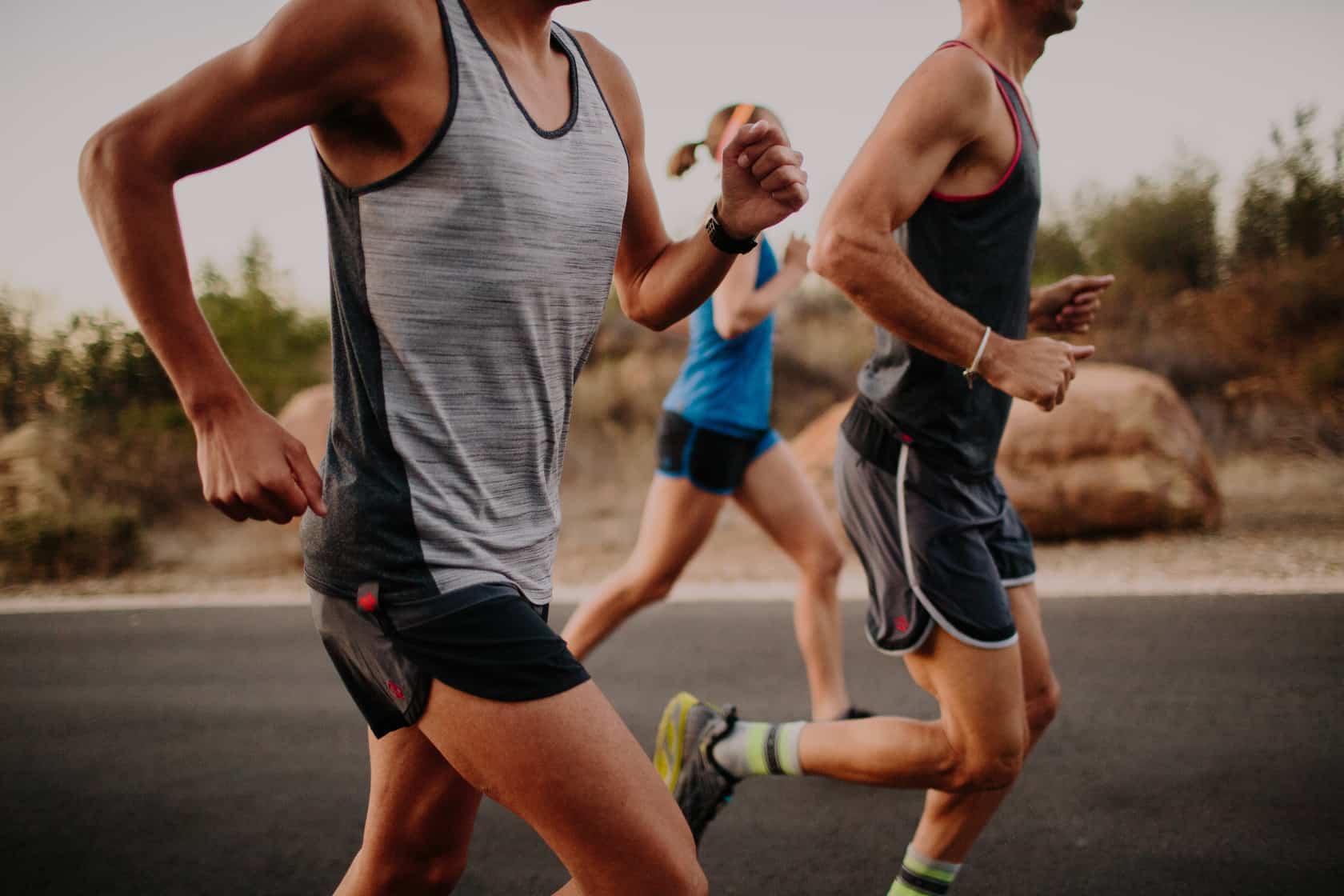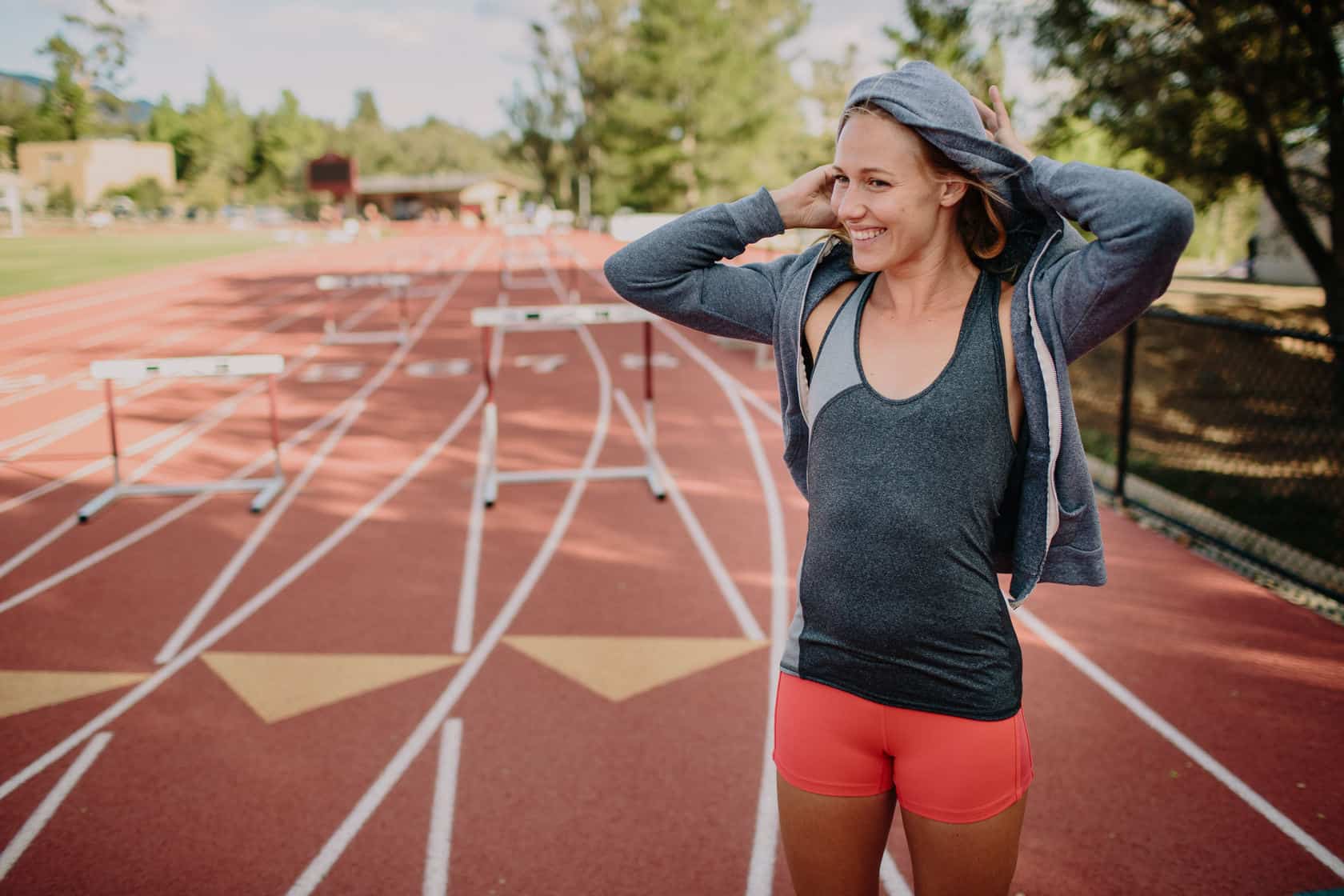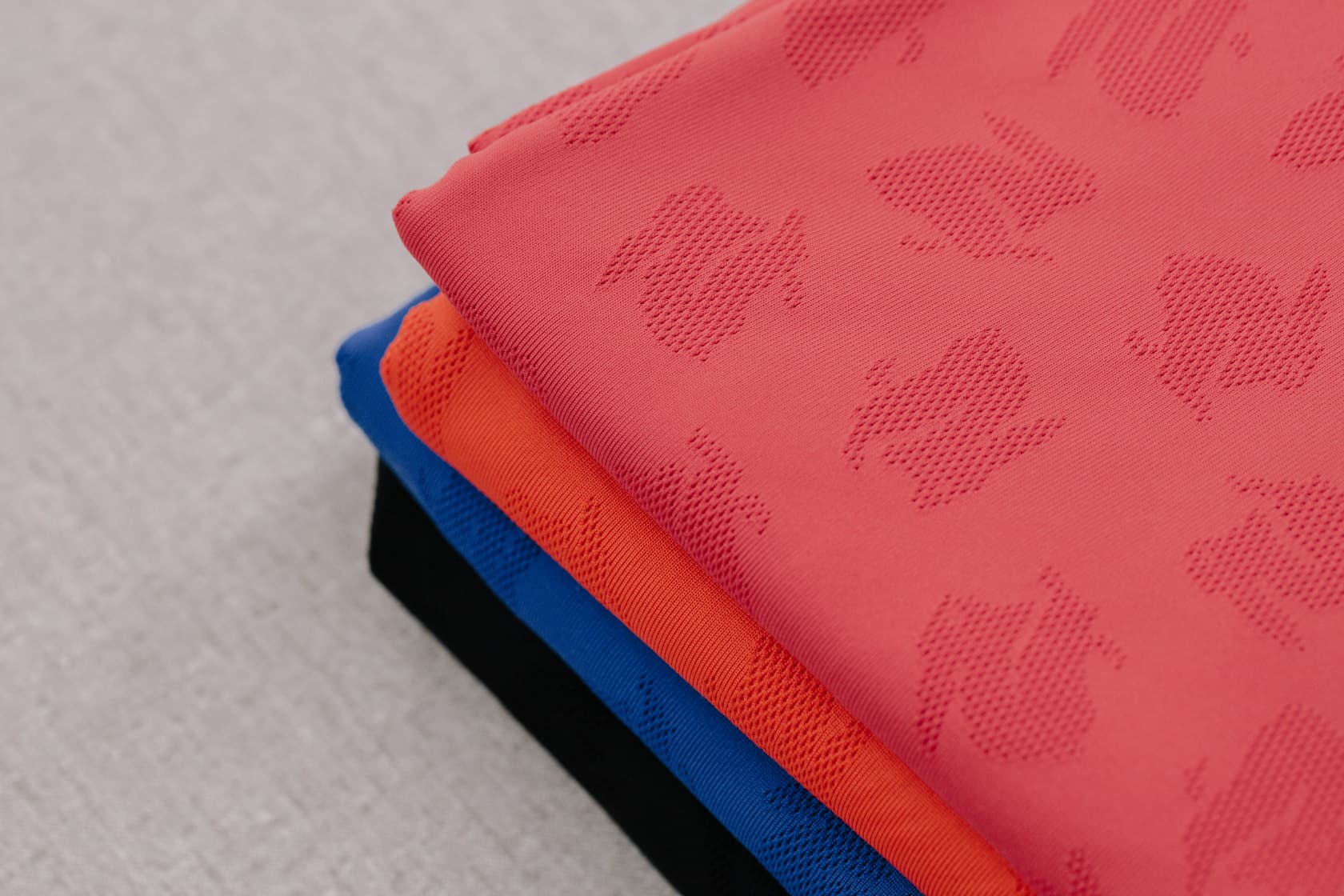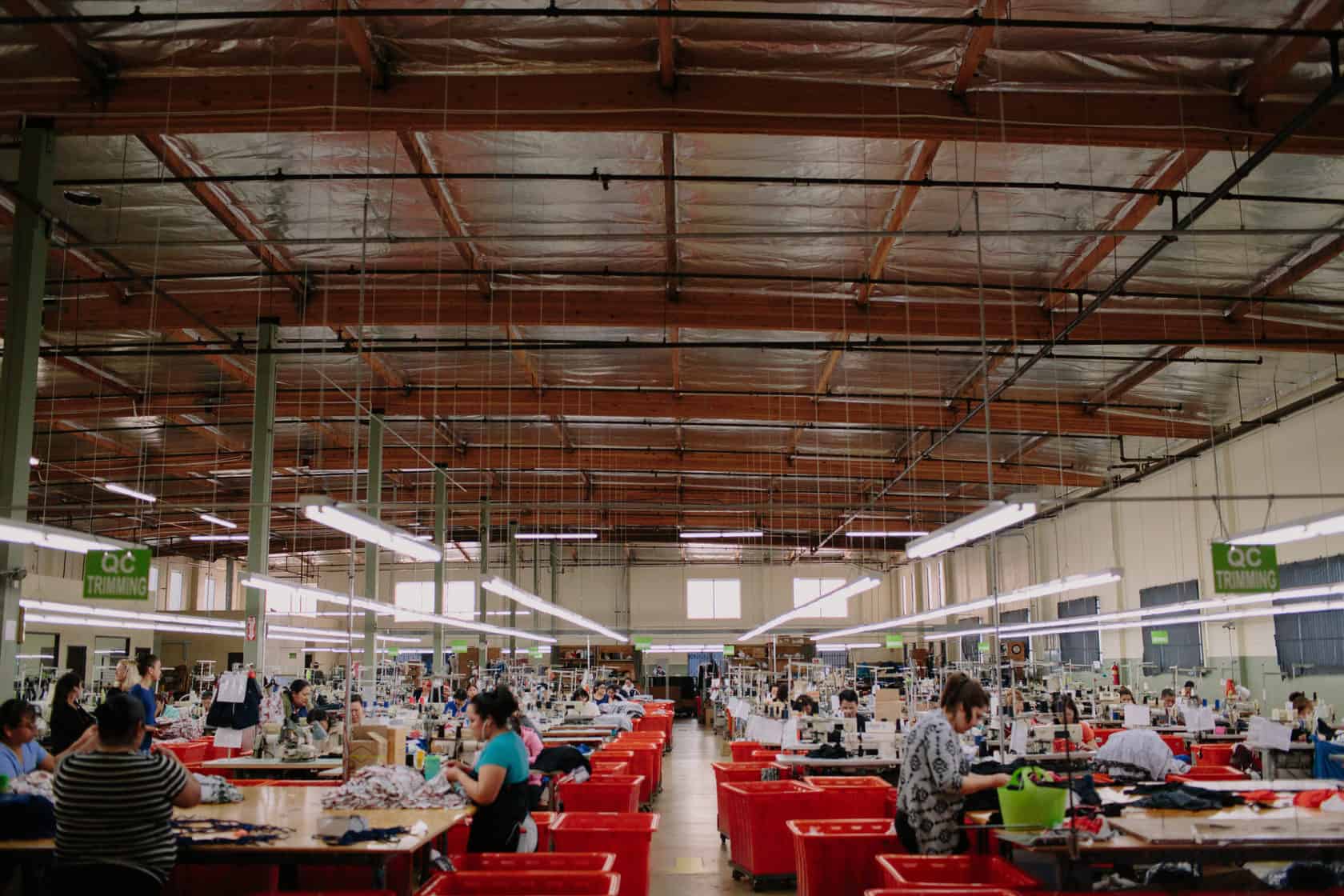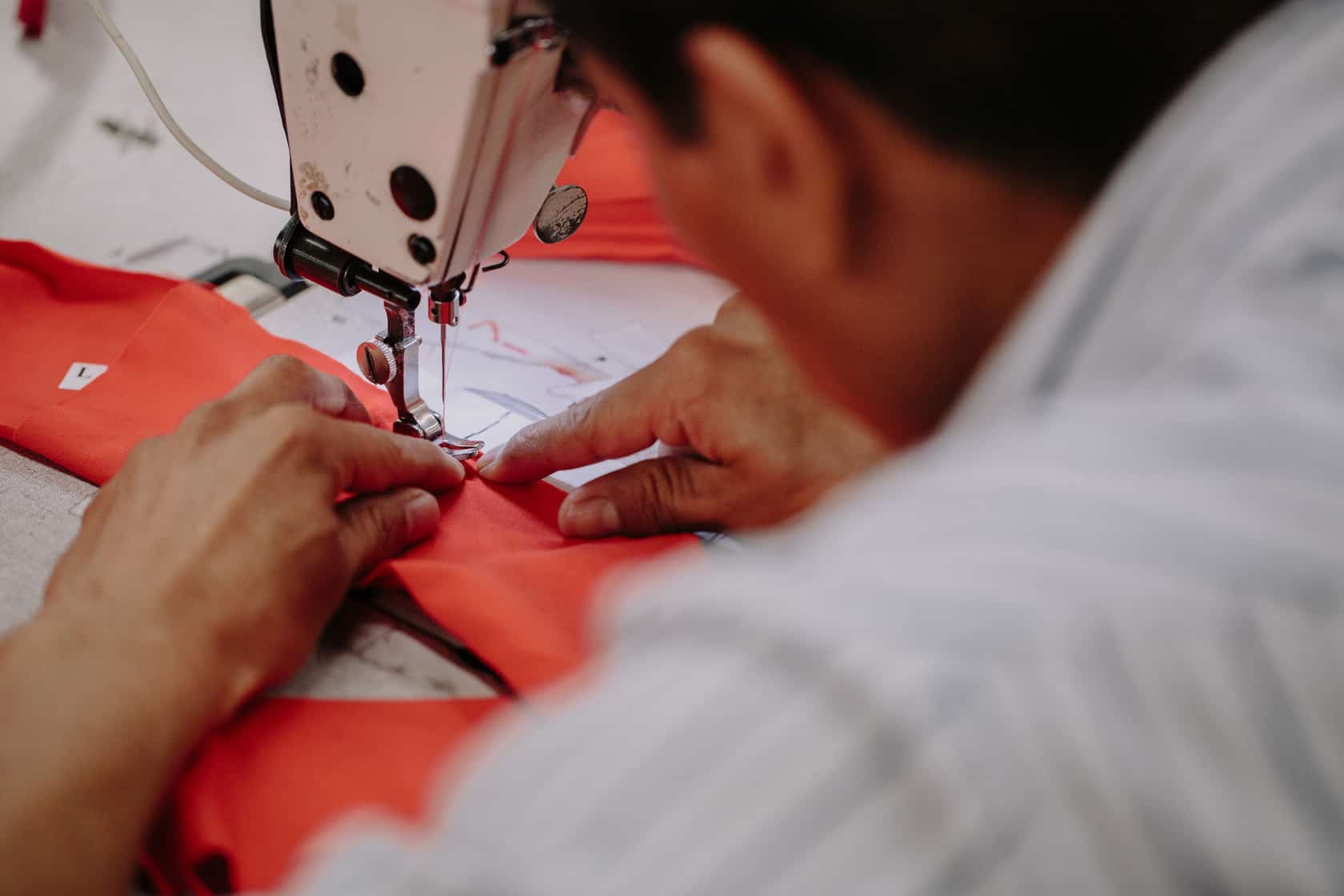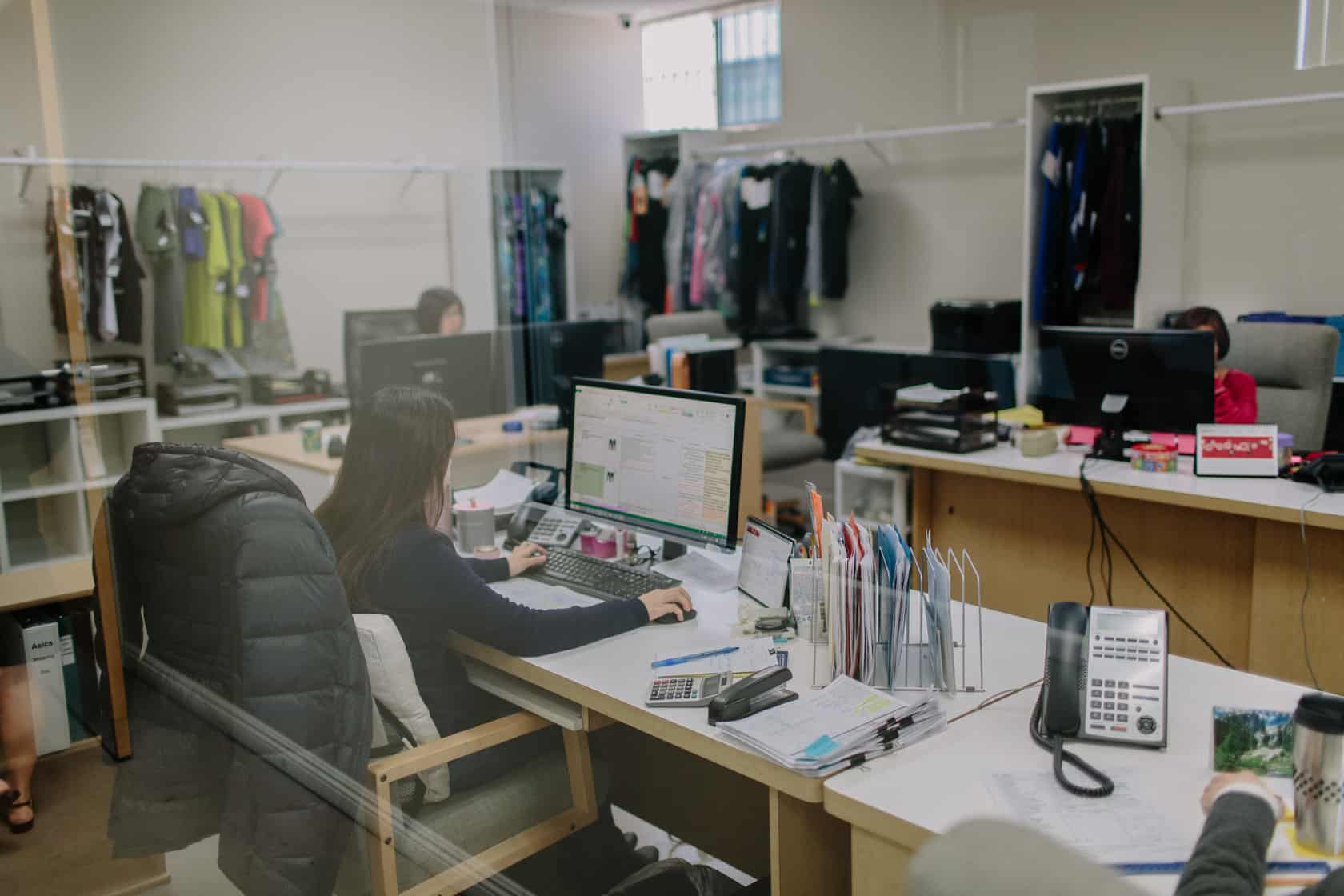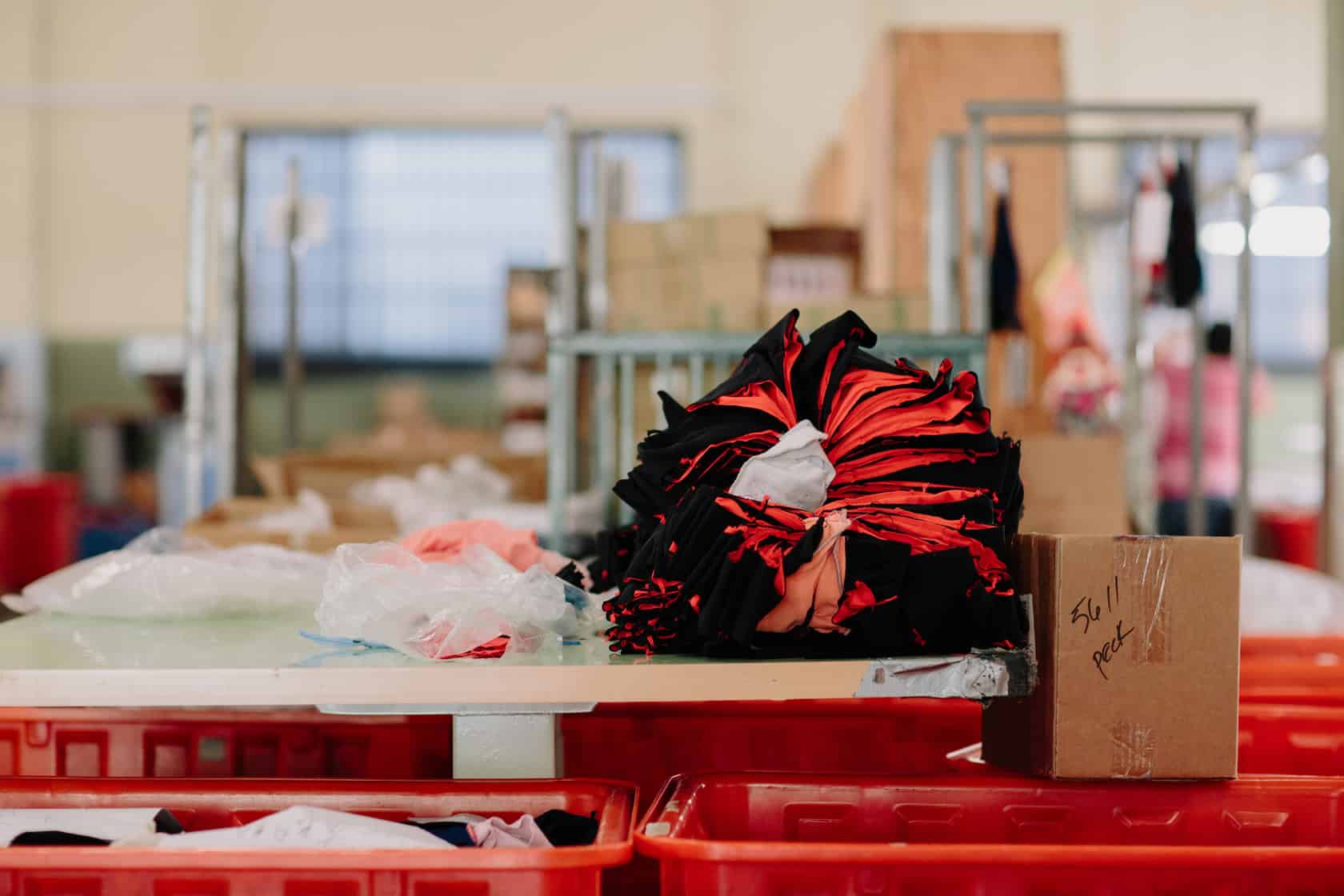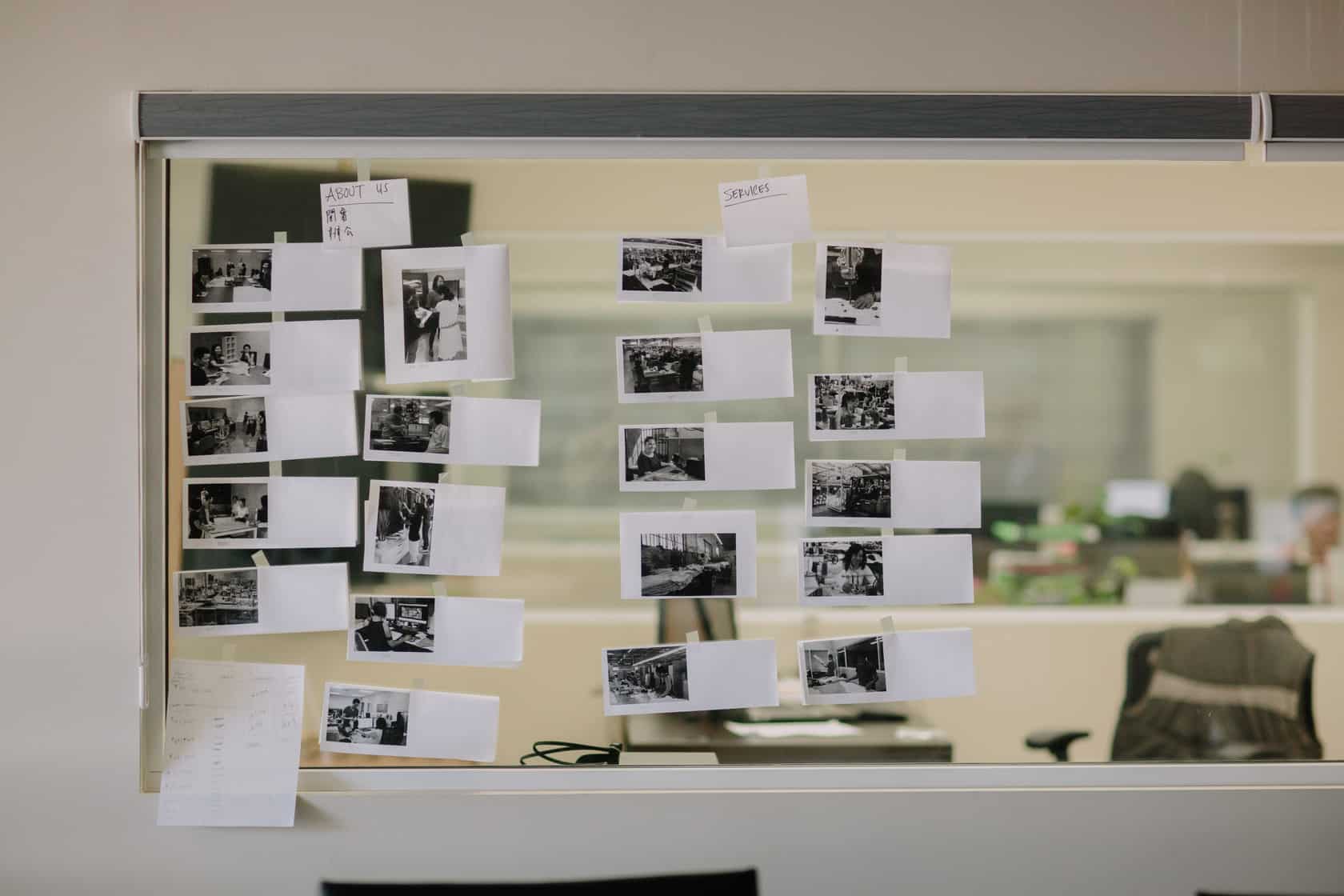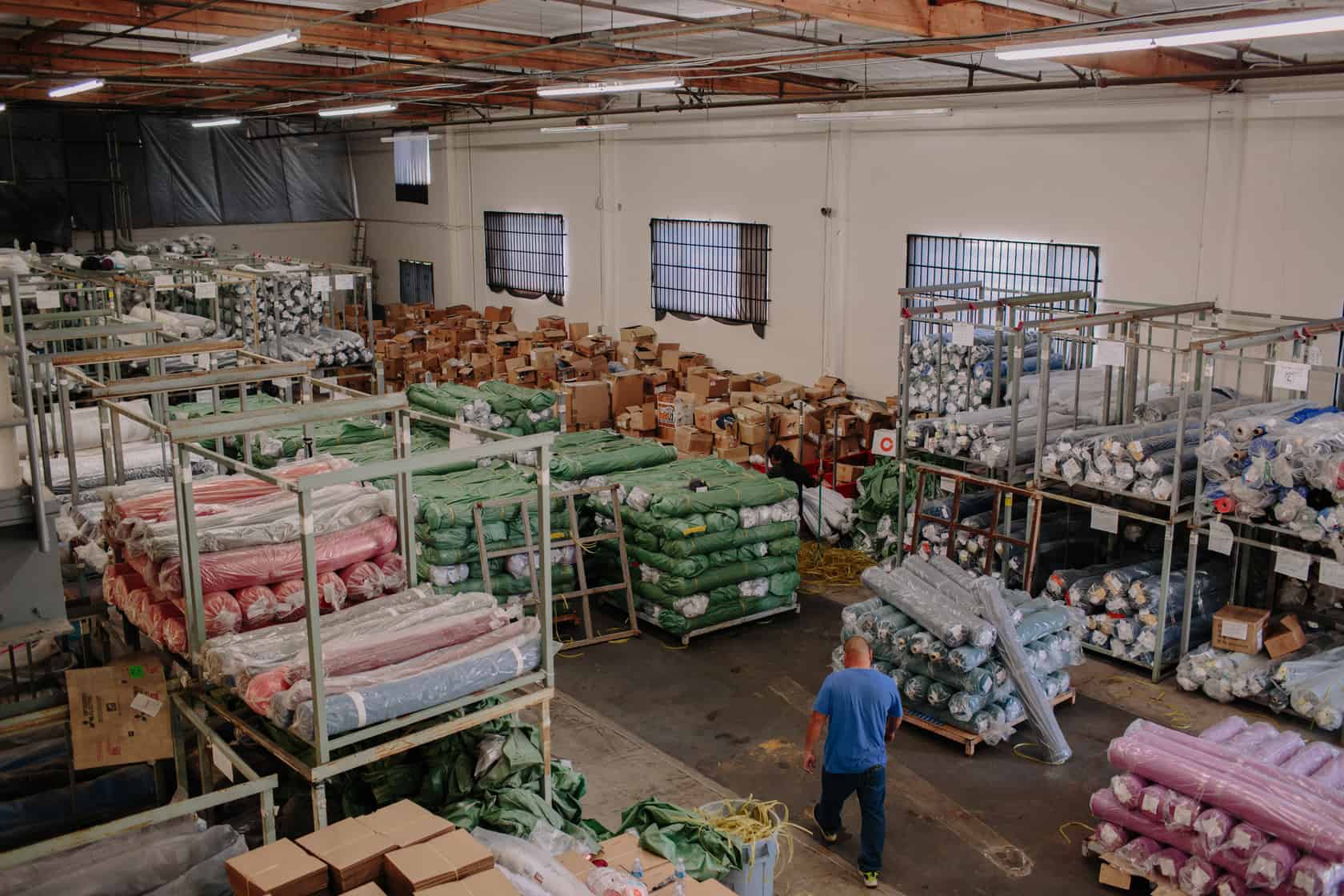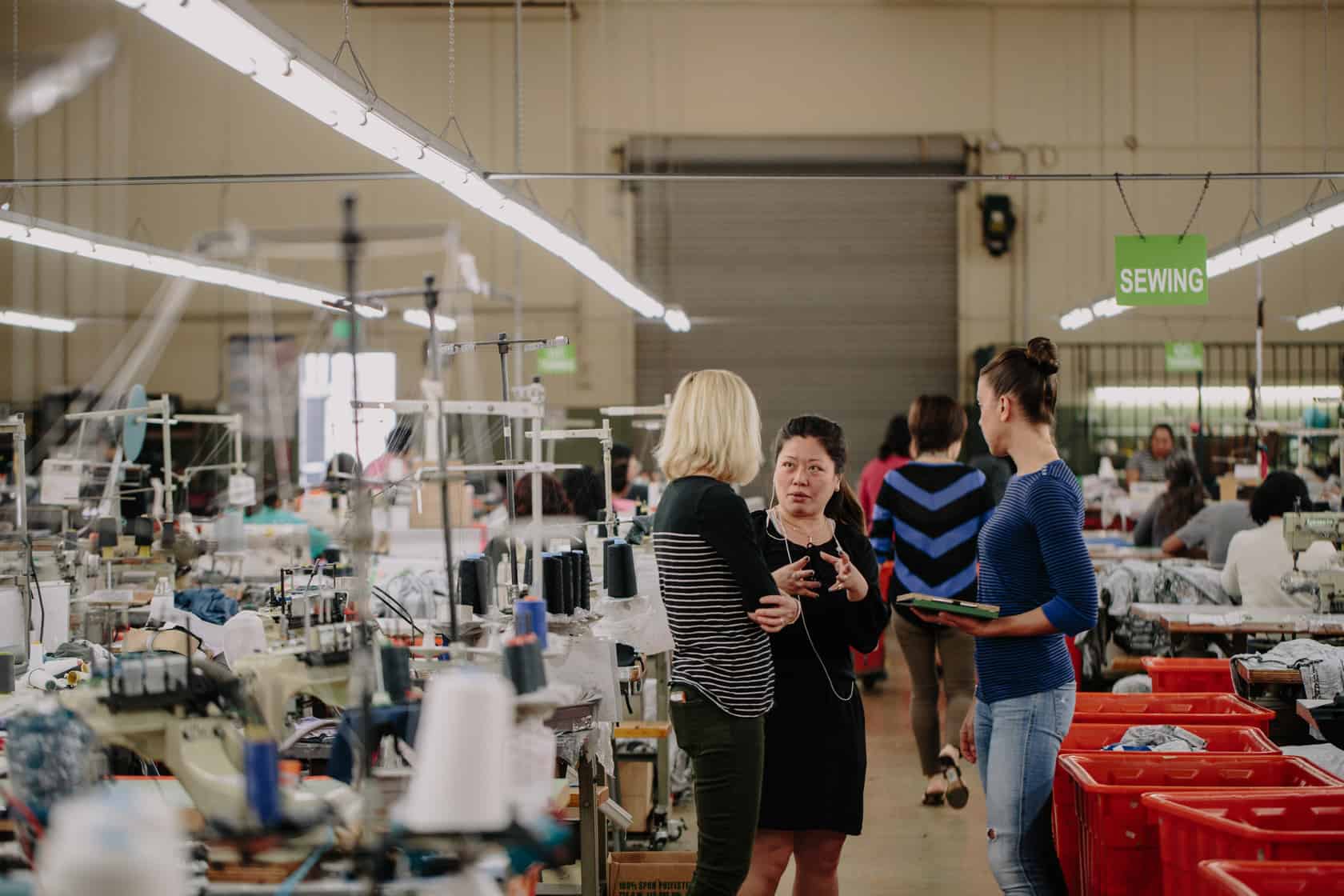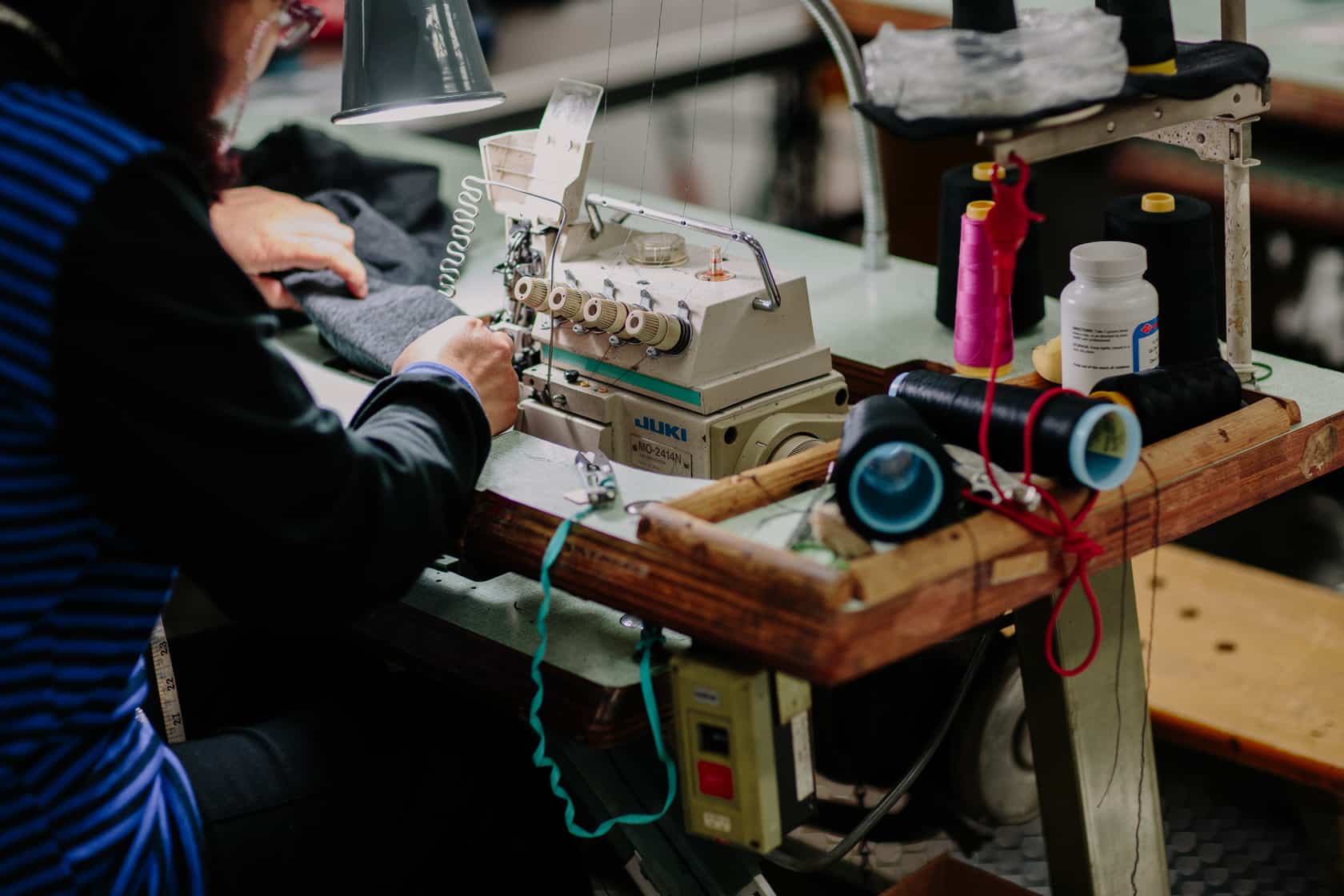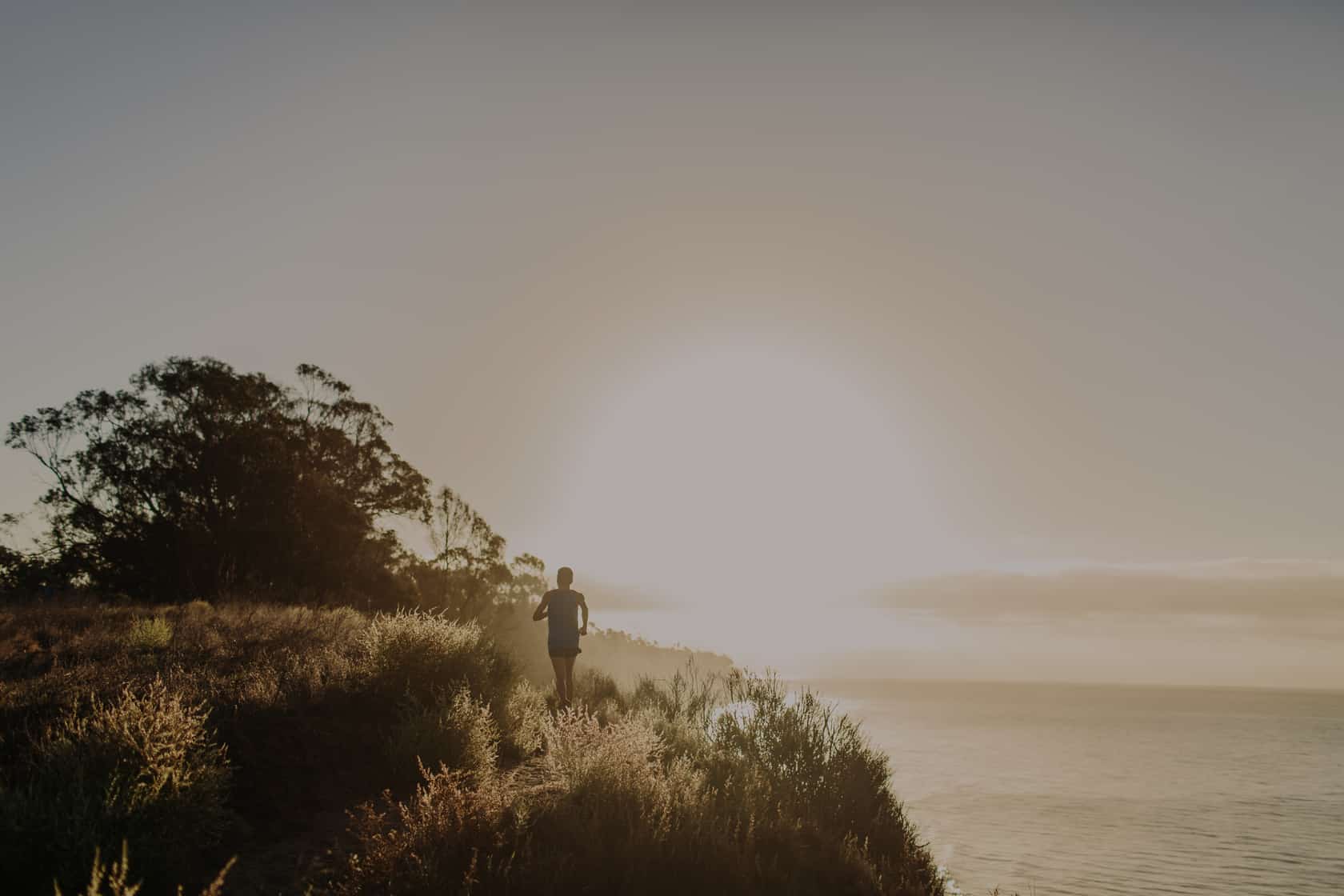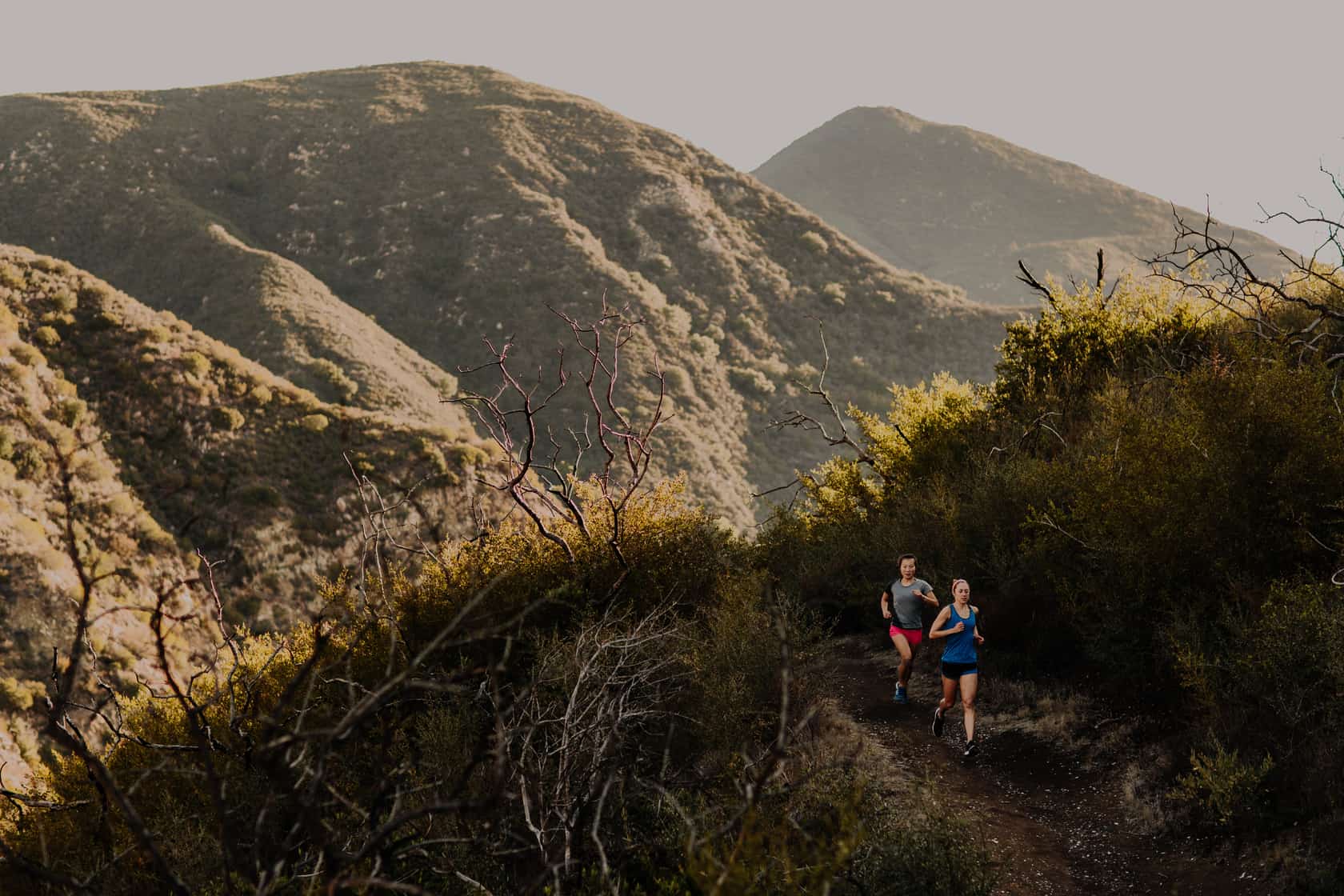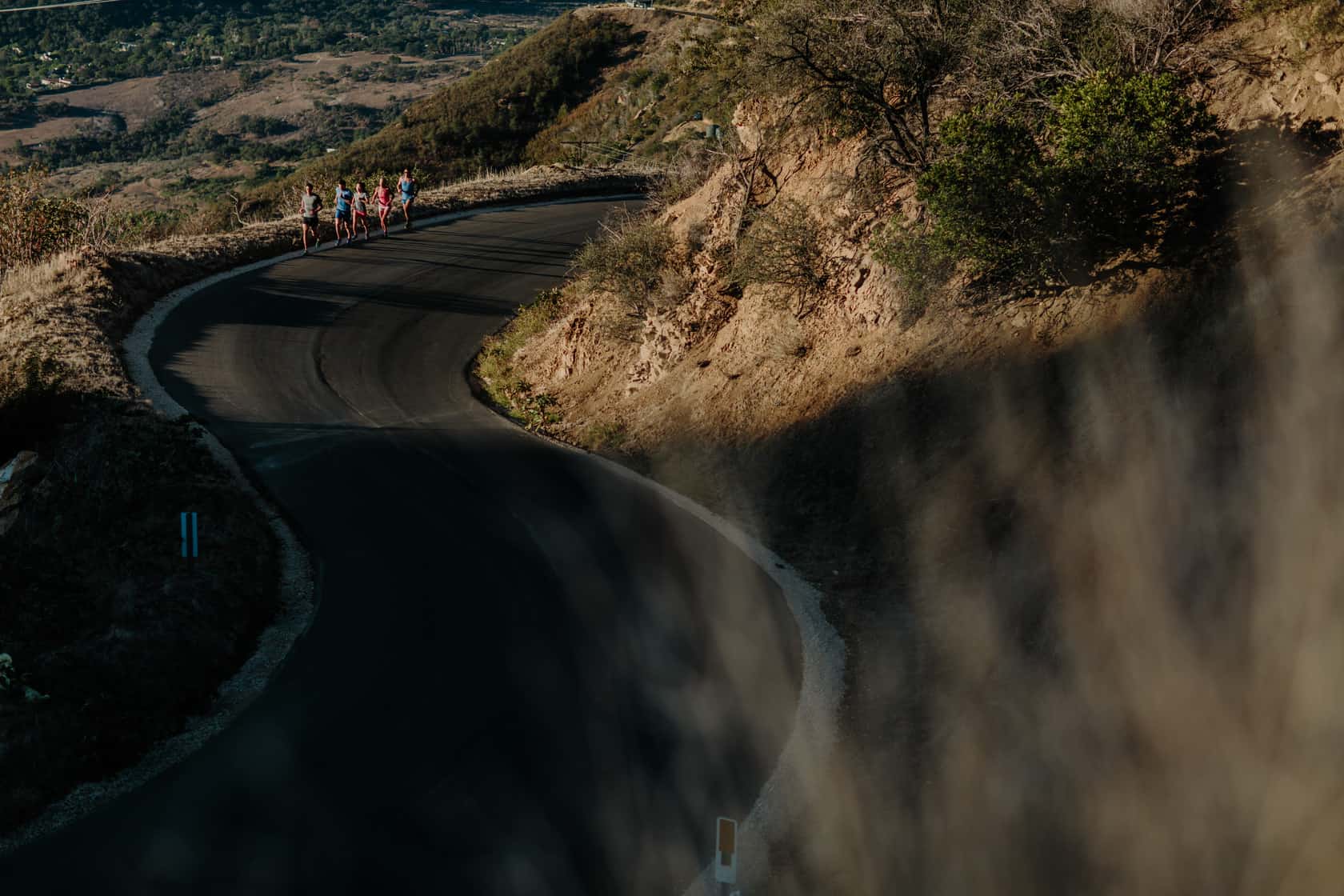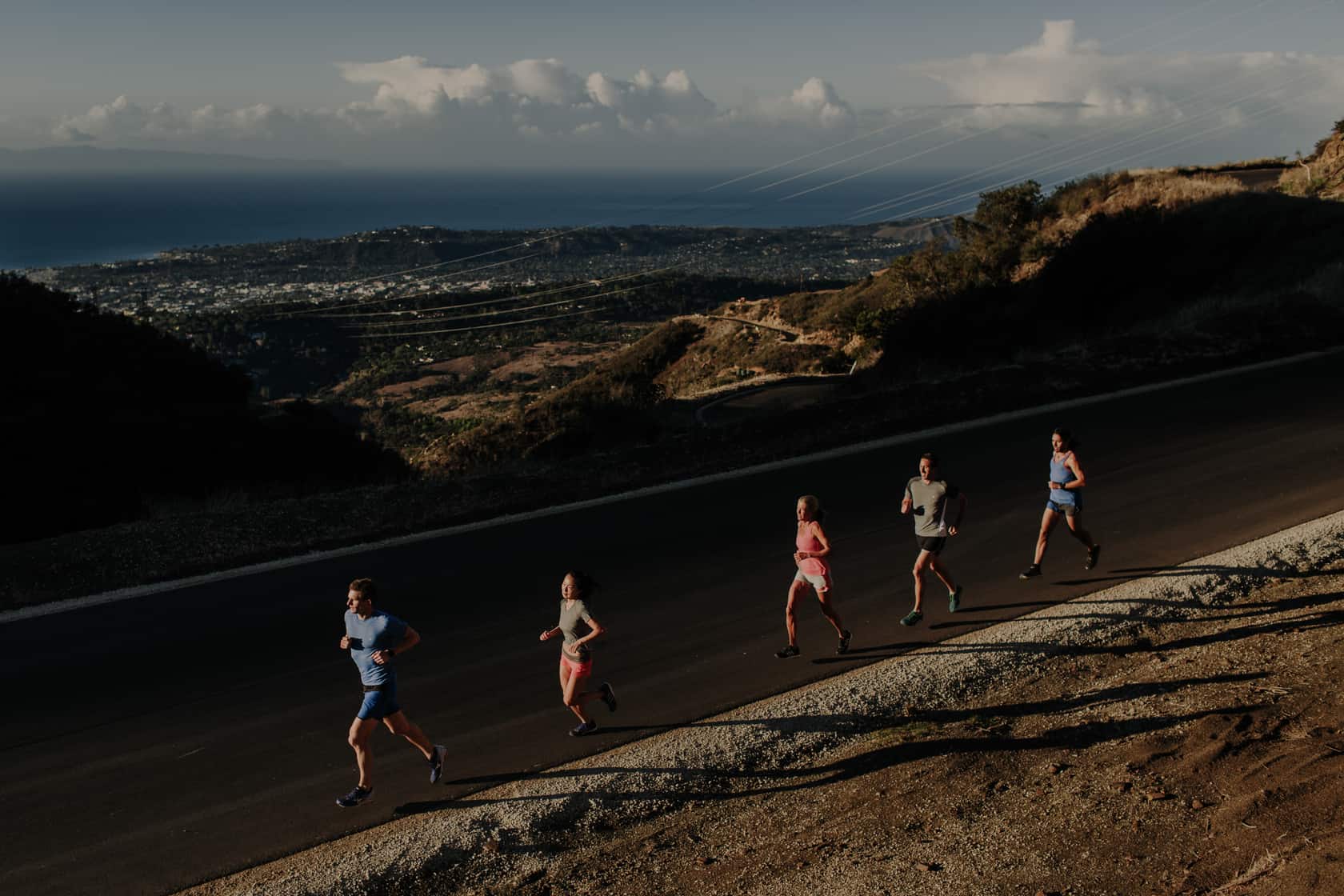“Our goal is, be successful at making amazing performance running apparel.” Monica DeVreese

The Turnaround, Part #1 by Gael Couturier. The idea of this column is to bring under the light some of the new outdoor sport companies that are changing the game – probably forever – allowing us to play harder, longer and always get more fun. For this first story, I went to Santa Barbara, California, and met two beautiful and busy young women: Jill Deering and Monica DeVreese. They are the founders of rabbit, a California-based performance running apparel brand that was created in Santa Barbara and is manufactured in Los Angeles. rabbit purposely appeals to the real runner, from the weekend warrior to the elite, regardless of talent level. If you identify as a runner, if you love the sport and are passionate about it, whether you are slow or fast, rabbit is talking to you.
“We chose the name rabbit because of what that stands for in the sport. In a race the rabbit is the pace setter, who works hard and sacrifices him or herself for the benefit of others. We love that mentality and the spirit behind it.” Jill Deering
I meet with Jill Deering and Monica DeVresse at the Santa Barbara Running Company, a Southern California running store owned and operated by Monica and her husband Joe, who’s Anthony Kiedis doppelgänger.
When I walk into the store, the wall on my left is about 80% covered by rabbit apparel. I take a few steps in and take a closer look around. I realize the rest of the shop is…well, asides from running shoes from different brands, also covered in rabbit apparel! Jill and Monica – and Kiedis – welcome me and we start generally making small talk about how the endurance sport market has recently been energized, re-vitalized really, by smaller companies like theirs, companies led by unsatisfied and frustrated core runners.
We all quickly agree that, unless you’re pretty new to the sport, or not too passionate about it, it’s very easy to feel that most of the conservative iconic companies don’t seem to care about us anymore. Like Sally Bergesen puts it: “Too poofy, too baggy, too high-waisted, and all wrong in the color department.” Sally Bergesen is the founder and CEO of Oiselle, a new and purely women’s brand, all about the sisterhood, who, just like rabbit, commits to the running market to do things differently, something really tailored for runners. “What’s different about rabbit? We’re so much softer and more comfortable.” Monica DeVreese
As we’re talking, two soon-to-be big brands come to my mind right away in order to so perfectly illustrate this incredible phenomenon in which the old players are slowly getting replaced by the young guns. My two favorite companies are Altra and Hoka One One. Hoka One One, originally from Annecy, France, which is the European equivalent of Boulder, Col., now has its headquarters in Santa Barbara under Deckers supervision and ownership. Altra, the Utah based shoe company that everyone in the industry mocked when it started is also revolutionizing the game with shoes – finally – shaped like real runner’s foot. Ultimate Direction and UltrAspire also come to mind as new emerging brand designed for core runners by core runners, but they’re on a smaller and different market segment. Fine.
Who else? Well, sure, now there’s Oiselle – also sold here in Monica’s shop – and, believe it or not, Lululemon, a yoga brand that’s being way too smart to be true these days. I ran the Los Angeles marathon a few weekends ago and Lululemon was on everybody’s butt.
I know. Crazy.

“Admittedly, we are running geeks!” DeVreese
Jill: “Monica and I met through a women’s running team here in Santa Barbara. I approached Monica about the idea of rabbit because I felt disappointed with the running apparel available everywhere. The shorts were too big; super baggy for example. We hated it. It was not at all flattering. And the fabrics were often too scratchy. Of course a brand like Lululemon has super great products but they are predominately a yoga brand. Are they a running brand? I remember as an elite runner, going to races and wearing Lululemon, and questioning whether real runners race in that. So, what was I supposed to wear, what were the options? Is it between the bad -itting famous brands and Lulu? That’s my choice?”
Monica: “rabbit is pretty new and we are just really getting going. We launched a Kickstarter campaign in December 2015 which really helped to get the marketing rolling. We took pre-orders and started shipping in April 2016. And then our website went live on May 1st, 2016”.
Jill: “People really want to have a connection to a brand. Even though we truly believe that our product is amazing, it’s really more about that connection and the community we’re building. Everything is made in LA. In terms of design, we wanted to go back to what worked in the past: the running splits and tops that felt great, and we asked ourselves where did that get lost? How do you take a great vintage tee-shirt feel and make it into a great performance one? That’s what we sought out to do.”
Monica: “Our fabrics are built to give you a feel that you love and you never want to take off. Our clothes are not super synthetic and not overdesigned. They are intended to be really comfortable and fit specifically for running. Visually, we have fun with colors and design of course, but it’s really the fit that matters the most. And, we’ve made sure that when you put your rabbit clothes in the wash, they won’t get ruined”.

OMG. Bad hombres! That’s disgusting.
Seriously? How could Nike, which started as a running brand, ever forget about us, the true and only noble hearts? I mean, we have all embraced Phil Knight’s vision and we’ve always – always – been hardcore supporters of its goddess until…well until, Phil Knight left the company and the new guys fed us with Nike Free at every single meal. I know, sure, it’s a simplification but let’s just put it that way for a second. How could Puma’s only concern be sprinting and fashion apparel? How come Asics, one of the most conservative brands on the planet, has never seemed interested in selling good, great, apparel to us? And what are the guys at Adidas, Brooks, Mizuno, New Balance or Saucony, really thinking? Are they only focusing on mainstream stuff such as training, yoga and running for beginners? OMG. That’s disgusting. Guys, we’re here!
Jill: “For most of the big brands out there, footwear comes first. Sales for running apparel hasn’t been great across the board. Those guys, in my opinion, are designing their running apparel for a lot of things other than just running: training, yoga, Pilates and going to the local coffee shop. You can wear it if you’re a runner or if you’re going to the gym but it’s not really made specifically for one or the other. It’s kind of multi-functional apparel. This explains why we are needed; to fill that hole in the market.”
Monica: “And I think it’s also a distribution problem for those big brands because from a customer’s point of view, how can you really tell the difference between a short you can find in a running specialty store, versus on Amazon or at Dick’s sporting goods? And so why would you go to a running specialty store to buy a pair of shorts? We want to support the running stores and we want to keep them special and so no, we don’t want to get on Amazon.”
Just by looking at Jill and Monica, I can tell you how fit they are. Those girls are athletes. They are slim and nicely tanned. I read determination in their eyes of tigresses. They sound smart, honest, happy. Those two pretty much look progressive Californian to me.
Monica: “I am coming from a brand management, product management and product marketing background, some of it at Deckers, and then of course as a running store owner. Jill, as a runner, and a customer of the shop, came to me and expressed her frustration with running apparel”.
Jill: “We’re asking questions to our customers and we’re listening to the response. And when we started, that’s just what we did. We talked to every runner we knew. We had focus groups, we had meetings, we had surveys and we asked them to tell us what they really wanted. They are also part of our brand. Our consumers are our friends, members of the same running community, both locally but also in the larger sense of the running community. We want to support the sport as a whole and we will do whatever we can to do that, and that’s why we’re trying to do things a little bit differently”.
Monica: “People are coming into our shop because we have the newest and coolest running products, like any specialty running store, but people also want a story, they want to feel connected to a brand and that was clearly missing from most of with the other “running” brands”.
The more I listened to these women the more I started to understand their frustration. They were making a lot of sense. I remember running the Marathon Des Sables several years in a row, this impossible stage race of 250 km in the Moroccan Sahara with the simplest army kaki cotton tee-shirt ever. Why? Well, only because I thought it look way cooler than all the running branded tech-tees I could get my hands on.
Few years ago I visited the Mizuno headquarters in Osaka for a story on the Japanese brand. The amount of research they do over there had really impressed me. I wouldn’t say it is mostly on shoes though but it is true that the result in apparel, which is highly technical, doesn’t always look great. I also visited the Under Armour headquarters in Baltimore the same year and I saw the same thing: lots of money spent on R&D. But I guess that’s the thing now: It’s all about high-tech when all we really need is some nice cuts, good designs and smooth texture.

Lululemon, Oiselle, rabbit, and Hoka One One by rabbit.
OK, stop right here for a second. I have to be honest. When I’m in the shop with Jill and Monica, checking out the designs of their rabbit brand they happily showcase in front of me, I do not feel like I’m in the presence of any revolutionary stuff. I will even write that some of the things I see can’t, in my opinion, match my grassroots needs as an experienced ultra trail runner, yet.
Take my 3.5-inch split shorts from The North Face for example, the one that I bought 5 years ago and use mostly for training and racing in the heat. It has 3 pockets, one large rear zip pocket and two generous side external pockets in which I know I can stock 2-3 gels. My Patagonia (very) baggy running shorts which looks like a surf trunk, true, and that I also bought around 5 years ago, have two very large pockets on the sides. I use it for racing because I know I can stock in it whatever comes my way at an Ultra Trail du Mont-Blanc aid station: French ham, French cheese, Haribo crocodiles, Italian sausages, vegetarian pizza chunks, and even Swiss chocolate. Not all at the same time.
The rabbit shorts I’m looking at, no matter how long they are, all have two pockets, one rear very small zip pocket and one front even smaller internal key pocket. This makes me realize rabbit is still pretty much a road running brand. I get that. Fine. No big deal. Jill and Monica both are very strong runners, the sub-3h marathon type, and their relatively new brand already covers a lot of running apparel basics. “We have a trail running short coming out this June with different fabric and more pockets!” Jill suddenly tells me. Oh. OK. You guys are good.
What seems to differentiate them from the rest is the quality of their woven. It’s a combination of polyester, nylon and spandex. I have to say that they feel great. Why? Well, because they do feel like you have nothing on you. This is true. They also dry pretty quickly. I am writing those lines from Tahiti where I am on assignment for another story, one being on the Moorea marathon. The climate here is, as you can imagine, is pretty hot and humid. What also make them – very – special is their 100% California built. “This is a biiiig deal” comments Monica. And she’s right. rabbit is one way to go if being ethical and socially responsible is important for you.
Monica: “At the beginning it was a bit hard because no one had heard of us and they were a bit scared to take a chance. We started with the stores who were willing to give us a chance, hoping that we would build a great relationship with them and knowing we would grow from there. But now, since nobody is having great success with the big brands in the apparel side – nobody – retailers are begging for brands like us. And we’re actually forced to turn some new stores down right now because we are in the position where we have to be picky and make sure we have enough inventory to properly serve those stores who took a gamble and brought us in.”
Jill: “Patagonia is a good example of what we want to become later down the line because it’s a big brand that has always stayed true to itself and its core values. They are huge today but they don’t make you feel like they’ve lost their soul. A lot of young brands are shaking up the market right now. But in terms of loyalty, Patagonia is the brand we follow the most”.
I recently wrote a story on Cliff Bar & Company. When I visited their headquarters in Emeryville, Bay area, I was deeply impressed at how close to its customers this brand is, how locally made and organic the products are, and how many positive impact would come out of this. So after meeting Jill Deering and Monica DeVreese, I felt the same way. I really like the 100% made in California. It reminds me of American Apparel, the first fashion street brand that came to my knowledge as being entirely made in Los Angeles. That was appealing to me. Californians will argue that the new president has already negatively impacted the aura of their country but, to me, the state of California remain this big fantasy world filled in with pioneers who are changing the game for the better.
A rabbit collaboration with Hoka One One is on the way. Today, in Tokyo, a store sells rabbit apparel. The times, they are changin’
More at www.runinrabbit.com
“Running is a vital part of our everyday lives. We are runners, true and true. As all runners know, don’t talk to us if we didn’t get in our run first!” DeVreese
All photographs by Robert J. Hill





